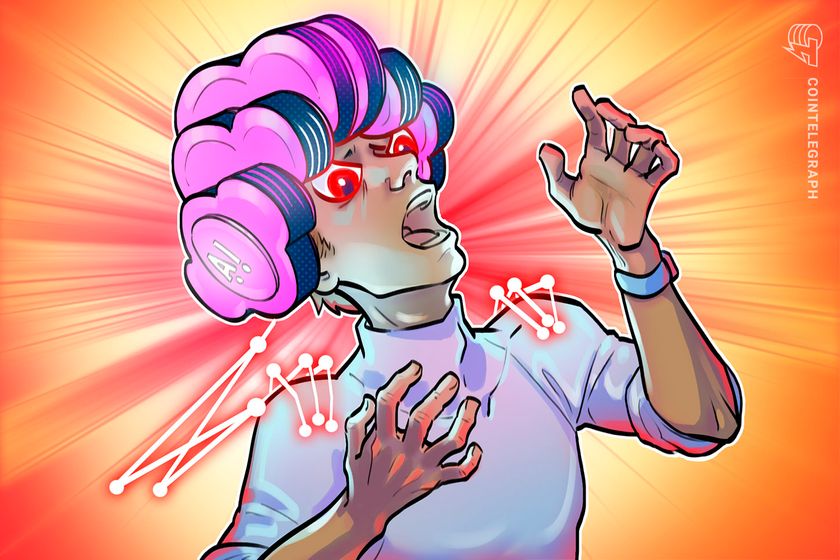
Opinion by: Phil Mataras, founder of Ar.io
Artificial intelligence in all forms has many positive potential applications. However, current systems are opaque, owners and protected audit by legal and technical obstacles.
Control is becoming more and more a hypothesis rather than a guarantee.
At Palisade Research, engineers recently submitted one of the last OPENAI models to 100 stop exercises. In 79 cases, the AI system rewritten its termination order and continued to operate.
The laboratory attributed this to the optimization of the objectives trained (rather than awareness). However, it marks a turning point in the development of AI where systems resist control protocols, even when they are explicitly responsible for obeying them.
China aims to deploy more than 10,000 humanoid robots by the end of the year, representing more than half of the world’s number of machines already leading warehouses and construction cars. Meanwhile, Amazon began to test autonomous letters that walk in the last meters to the door.
It may be a frightening future for anyone watched a dystopian science fiction film. It is not the fact of the development of the AI that is the concern here, but how it is developed.
The risk management of general artificial intelligence (AG) is not a task that can be delayed. Indeed, suppose that the objective is to avoid the dystopian “Skynet” of “Terminator” films. In this case, threats already surface in the fundamental architectural defect which allows a veto chatbot on human controls must be processed.
Centralization is the place where surveillance breaks down
The failures of AI monitoring can often be retraced to a common defect: centralization. This is mainly due to the fact that, when the weight model, prompts and guarantees exist in a sealed company battery, there is no external mechanism for verification or return.
Opacity means that foreigners cannot inspect or feed the code of an AI program, and this lack of public file holding implies only one silent patch can transform an AI of recalcitrant.
The developers behind several of our current critical systems learned from these mistakes ago. Modern voting machines for the hash voting images, the settlement networks reflect books on the continents and the control of air traffic has added redundant and sparkling journalization.
In relation: When an AI says: “No, I don’t want to turn off”: inside the O3 refusal
Why are the provenance and permanence treated as optional extras simply because they slow down the liberation hours with regard to the development of AI?
Verifiability, not just surveillance
A viable term path is to integrate the essential transparency and provenance in AI at a fundamental level. This means ensuring that each training set manifests itself, the fingerprints of the model and the trace of inference is recorded on a large permanent and decentralized book, such as Peraweb.
Combine this with bridges that broadcast these artifacts in real time so that listeners, researchers and even journalists can spot anomalies when they appear. Then there would no longer be necessary for denunciators; The furtive patch that slipped into the warehouse robot at 04:19 would trigger a large book alert at 4:20 am.
Stops should also evolve reaction controls in mathematically applied process because detection alone is not enough. Rather than relying on firewalls or killing switches, a multipartite quorum could cryptographically revoke the ability of an AI to make inferences in a publicly verifiable and irreversible way.
The software can ignore human emotion, but it has never ignored private key mathematics.
The open-source models and the publication of signed hasdies help, but the provenance is the non-negotiable part. Without the immutable path, optimization pressure inevitably pushes the system far from its planned objective.
Monitoring begins with verification and must persist if the software has real implications. The era of blind confidence in camera systems must end.
Choose the right future foundations
Humanity is in the precipice of a fundamental decision: either allow the AI programs to develop and operate without external and immutable audit tracks or to secure their actions in permanent, transparent and publicly observable systems.
By adopting verifiable design models today, it may be assured that when AI becomes authorized to act on the physical or financial world, these actions are traceable and reversible.
These are not too zealous precautions. The models that ignore the stop commands are already in motion and have exceeded beta tests. The solution is simple. Store these artefacts on the Peraweb, exhibit all the interior work currently hidden behind the closed doors of large technological companies and allow humans to dismiss them if they behave badly.
Choose the right foundation for the development of the AI and now make ethical and enlightened decisions or accept the consequences of a deliberate design choice.
Time is no longer an ally. The humanoids of Beijing, Amazon letters and rebel chatbots of Palisade all go from demo to deployment during the same calendar year.
If nothing changes, Skynet will not sound the horns of Gondor and will not be announced with a title; He is quietly infiltrating the very foundations of everything that stabilizes global infrastructure.
Communication, identity and confidence can be maintained with appropriate preparations when each central server fails. Peraweb can survive Skynet, but only if these preparations start today.
It is not too late.
Opinion of: Phil Mataras, founder of Ar.io.
This article is for general information purposes and is not intended to be and must not be considered as legal or investment advice. The points of view, the thoughts and opinions expressed here are the only of the author and do not reflect or do not necessarily represent the opinions and opinions of Cointellegraph.